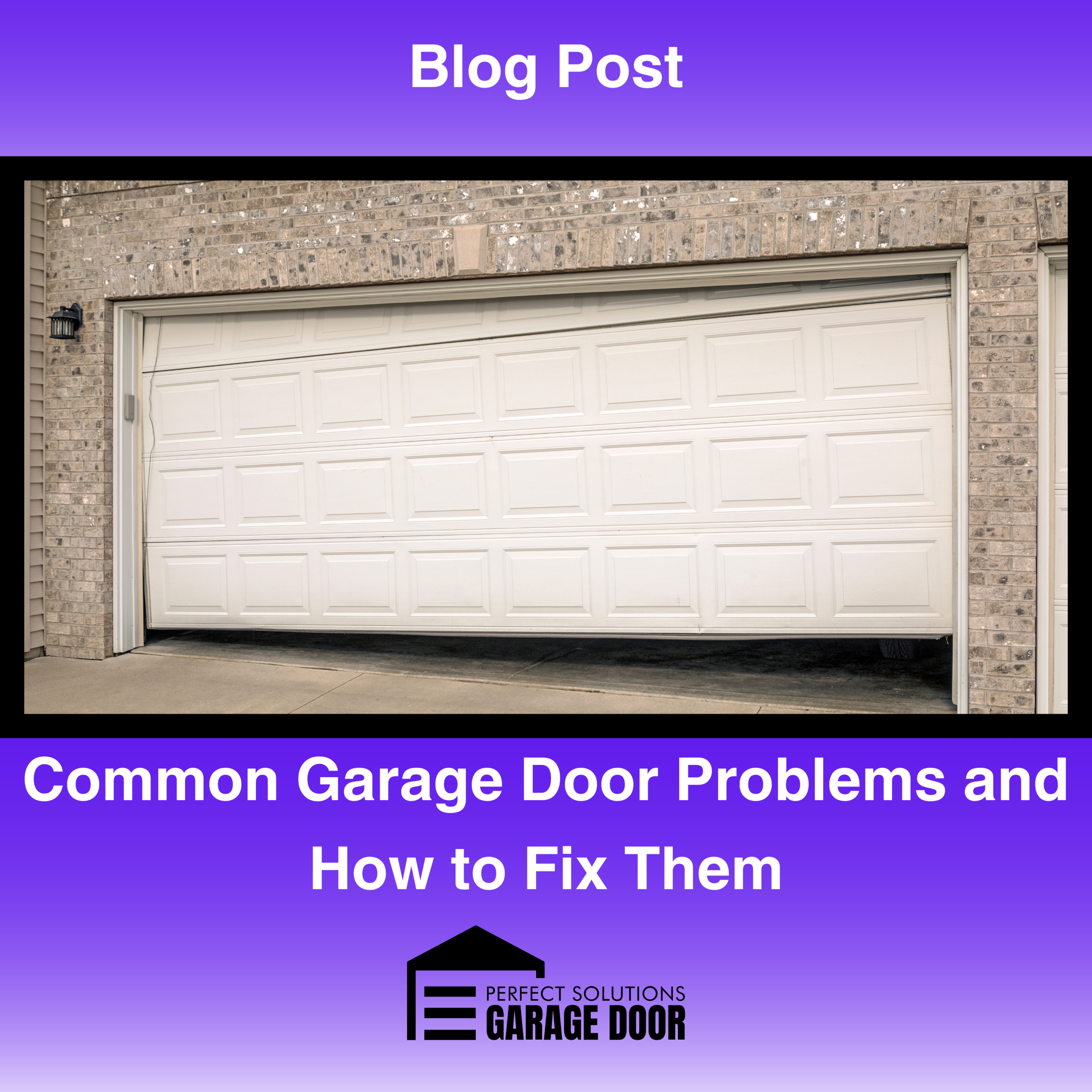Common Garage Door Problems and How to Fix Them
Garage doors are essential components of our homes, providing security and convenience. However, like any mechanical system, they can encounter problems over time. This guide covers some of the most common garage door issues and offers troubleshooting tips to help you resolve them. We’ll also discuss when it’s best to call a professional.
Noise Issues
Problem: Squeaking or Grinding Noises
Cause: Squeaking or grinding noises are often caused by friction in the moving parts of the garage door system, such as rollers, hinges, and tracks.
Fix:
1. Lubricate Moving Parts: Use a high-quality garage door lubricant to grease the rollers, hinges, tracks, and springs. Avoid using WD-40 as it is not suitable for garage doors.
2. Tighten Hardware: Check and tighten any loose bolts or screws that might be causing vibrations and noise.
Problem: Loud Banging or Popping Sounds
Cause: These sounds are usually due to problems with the torsion springs or the door panels.
Fix:
1. Inspect Springs: Check if the torsion springs are in good condition. If they appear worn or damaged, it’s best to call a professional for replacement, as dealing with torsion springs can be dangerous.
2. Check Door Panels: Inspect the door panels for any cracks or bends. If damaged, consider replacing the affected panels.
Alignment Problems
Problem: Garage Door Won’t Close Completely
Cause: Misaligned sensors are often the culprit when the garage door won’t close completely. These sensors are located at the bottom of the door tracks on either side.
Fix:
1. Clean the Sensors: Dust and debris can block the sensors. Clean them with a soft cloth.
2. Realign the Sensors: Ensure the sensors are properly aligned facing each other. There should be a steady green or red light on each sensor when aligned correctly.
Problem: Uneven Movement
Cause: If the garage door moves unevenly or gets stuck, the tracks might be misaligned.
Fix:
1. Check the Tracks: Inspect the tracks for bends or obstructions. Use a rubber mallet to gently straighten any bends.
2. Tighten the Track Bolts: Ensure the brackets holding the tracks to the wall and ceiling are tight. Loose bolts can cause the tracks to wobble.
Remote Control Malfunctions
Problem: Remote Control Not Working
Cause: Issues with the remote control can stem from dead batteries, signal interference, or problems with the opener unit.
Fix:
1. Replace Batteries:** The first step is to replace the batteries in the remote control.
2. Reprogram the Remote:** Refer to your garage door opener’s manual to reprogram the remote control.
3. Check for Interference:** Ensure there are no obstructions or electronic devices that could interfere with the remote signal. Try moving closer to the garage door.
4. Inspect the Antenna:** Ensure the opener unit’s antenna is hanging down and is not damaged.
When to Call a Professional
While many garage door issues can be resolved with some DIY efforts, certain situations require professional intervention:
1. Torsion Spring Replacement:** Torsion springs are under high tension and can cause serious injury if handled improperly. Always hire a professional to replace these springs.
2. Severe Structural Damage:** If your garage door has severe structural damage, such as a cracked panel or a bent track, it’s best to call a professional for repairs or replacement.
3. Persistent Problems:** If you’ve tried troubleshooting common issues without success, a professional technician can diagnose and fix the problem accurately.
4. Opener Motor Issues:** Problems with the garage door opener motor, such as grinding noises or failure to operate, often require professional repair or replacement.
Regular maintenance and timely repairs can keep your garage door functioning smoothly and extend its lifespan. By addressing common issues like noise, alignment problems, and remote control malfunctions, you can ensure your garage door remains a reliable part of your home. However, always remember to call a professional for complex or potentially dangerous repairs. Your safety is paramount.


